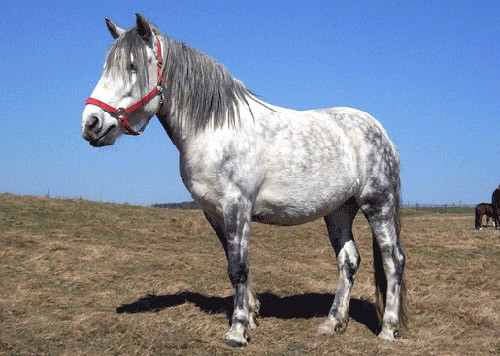Type the name of the breed you're looking for below
[wpdreams_ajaxsearchlite] Don't see the breed your're looking for? Click here and let us know!
Altai horse
| Country Of Origin | Russia |
| History and Background | The Alta’s Kaya, commonly known as the Altai, is named after its place of origin, the Altai Mountains. These horses were mainly used by nomadic tribes as mounts and pack horses centuries ago. Seeing as their area of origin is bleak, cold, and generally harsh, Altai horses had to have a very strong and hardy constitution. Their human masters -- the nomads of the Altai Mountains -- did not give them any special treatment or care. They were mostly allowed to fend for themselves. This led to the selection of the fittest in the Altai breed. Only the sure-footed, muscular and brawny horses with hardy feet and strong lungs, heart and tendons were able to survive in the mountains and were taken on by the tribes as their riding and pack horses. As such, the Altai is one of the hardiest horse breeds in the world, used as these horses are to very harsh climates and environmental conditions. In the early 20th Century -- specifically after the Revolution -- the Soviet Government thought of improving the Altai breed. After collecting many Altai horses, the Russians began a concerted effort to crossbreed the Altai with other existing Russian breeds such as the Orlov Trotters and Don, as well as half-bred horses. The result of the crossbreeding experiments is the still-hardy, but larger Altai horse. After getting the right mix of form and endurance, the breeders then moved on to breeding more of the hybrid Altai. In other words, the result of the cross-breeding -- the improved Altai breed -- was then bred with other Altai horses that were also a result of the cross-breeding experiments. In the 1970s, the results of further breeding were surveyed and the best among them were collected. Nearly 700 mares were herded in breeding farms and used to perpetuate the best Altai stock. Today, this breed also still exists in its aboriginal form. That is to say, thousands of the native and pure Altai that have not been subject to the extensive crossbreeding experiments done in the 20th century can still be found in the Upper Altai Mountains. |
| Use Today | Trekking animals, Beasts of burden, Riding horses, Meat |
| Height | 13 to 14.1 hands high (52-56 inches, 133-142 centimeters) |
| Colour | Black, chestnut, grey and bay. Leopard pattern is rare. |
| Characteristics | The Altai is typically muscular with a powerful croup, short yet strong legs, and a fleshy, stout neck. They have a slight indentation midway its back, which causes it to be susceptible to over-sloping and hock-bowing. |
| Personality and Temperament | The Altai has an exceptional ability to adapt to harsh climates and conditions. Even crossbred Altai horses exhibit this characteristic, although they are typically larger and more massive than pure Altai breeds. The Altai breed is also very easy to maintain and manage. It requires little special care, especially when allowed to roam freely in year-round pastures. They are stable and sensible animals and are strong and true. The Altai is known to be a hard worker and easy to care for horse. |



